Monstera deliciosa smaller leaves yellowing
Plant: Philodendron Monstera (call it *Monstera deliciosa* as it is not a Philodendron and will cause you confusion when you start collecting Philodendrons)
How long have you had the plant? 1-6 months
Concerns:
Several weeks ago I noticed a couple of the smaller leaves turning yellow. After a few weeks, when it didn’t seem to improve, I checked and saw that the roots were growing out of the bottom of the pot.
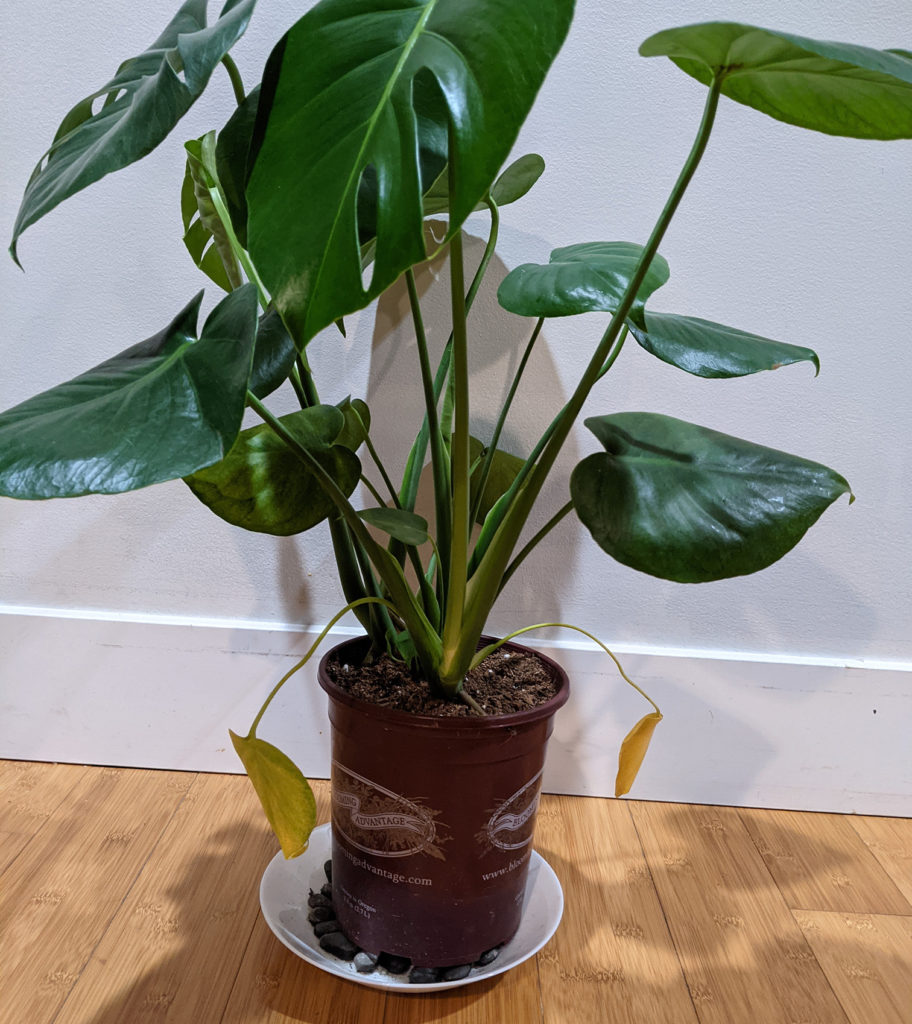
Two weeks ago I moved it into a bigger pot, and have been very careful not to overwater it, but now even larger leaves seem to be turning yellow. Please help!
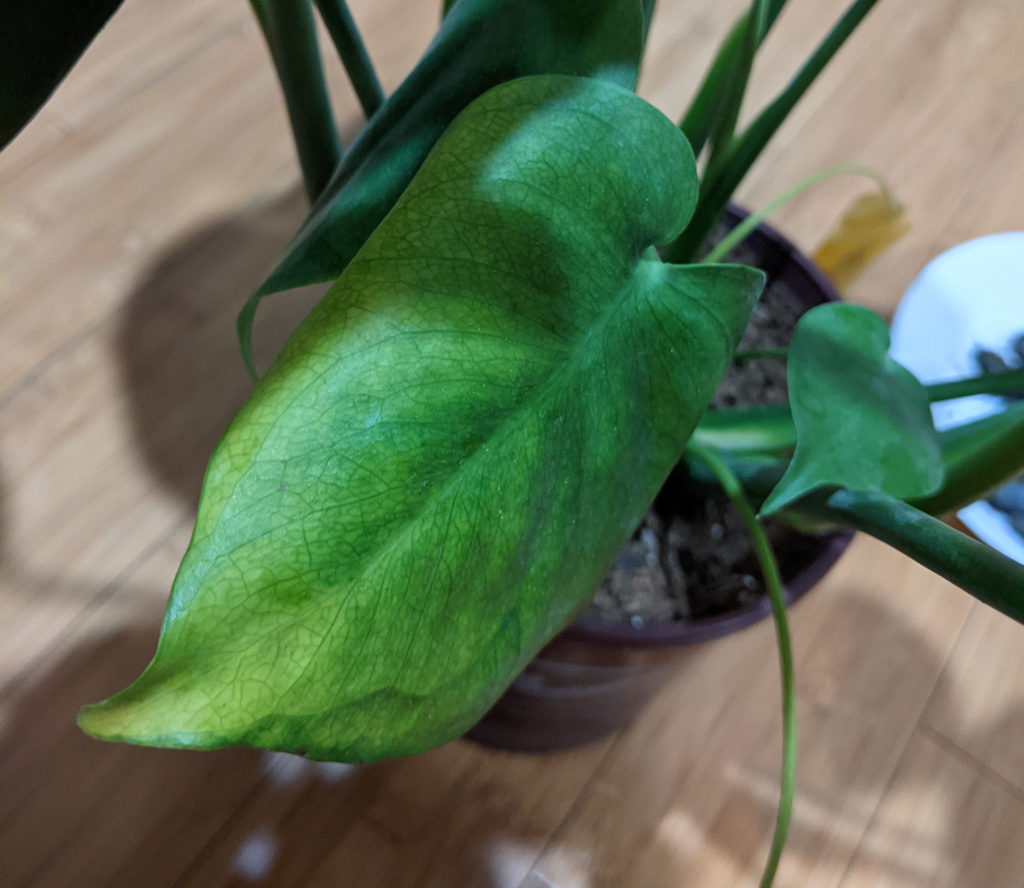
Light Situation:
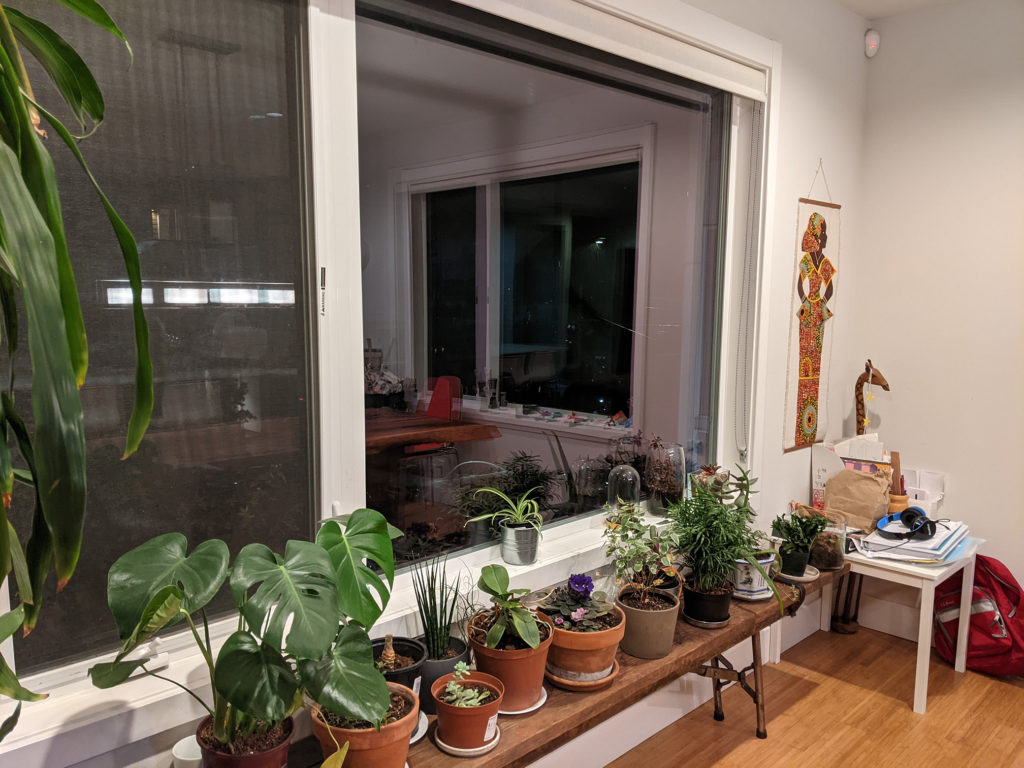
How do you determine WHEN to water? I wait for the soil to become slightly dry before watering.
Describe HOW you water: I fully soak the soil, letting excess drain away.
Fertilizer? I’ve never used fertilizer.
Soil:
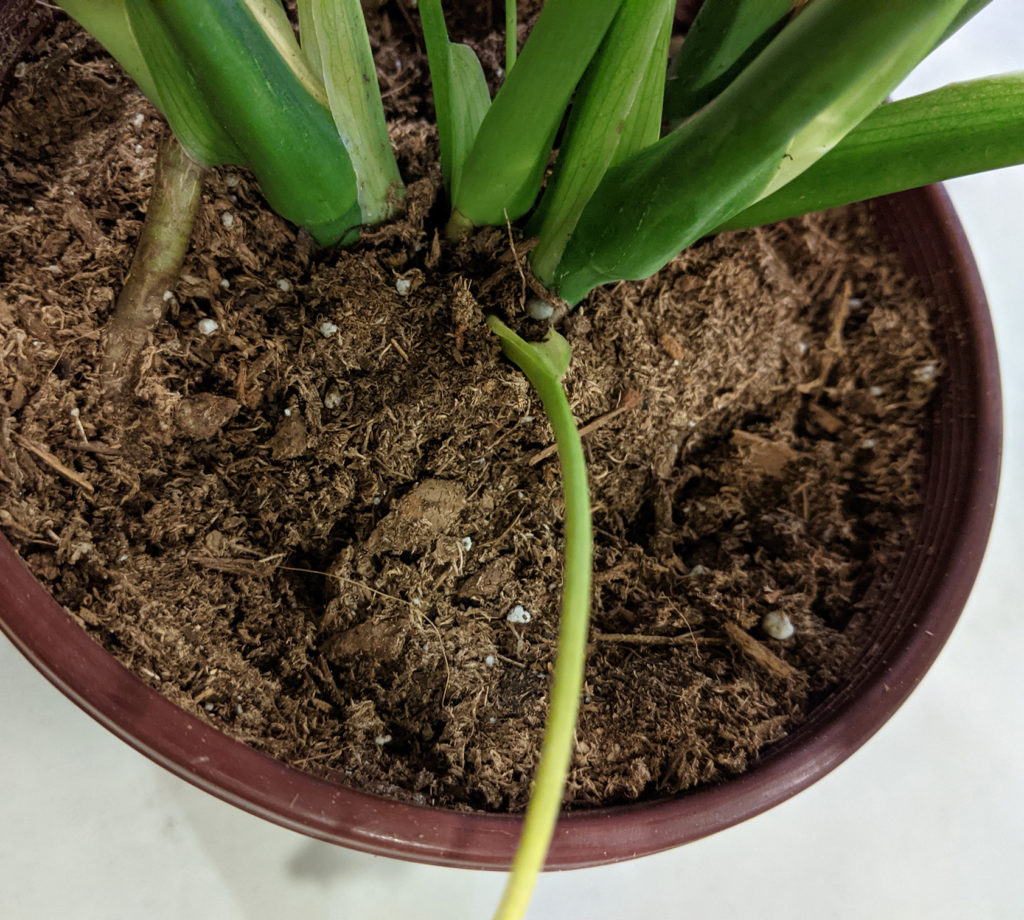
Darryl’s Analysis
Environment:
The current location where you have it is suitable in terms of light: as close to the window as possible is great.
Effort:
You are fixated on the false idea that overwatering causes yellowed leaves. Older leaves yellowing will eventually happen – the reality is that leaves have a limited lifespan – they don’t last forever. This means that WHEN (no if) a leaf turns yellow, it’s not always indicative of something that needs correcting – and once a leaf starts yellowing, in most cases, it cannot be reversed.
You can lessen the occurrence of leaves yellowing by using fertilizer (again, you can never completely prevent it) – more info on fertilizers here.
Correct watering: (determining WHEN to water a Monstera) whenever the soil is about halfway dry. HOW to water: fully soak the soil, letting excess drain away (which you are doing).
You can repot your Monstera into a pot that has roughly the same diameter as your largest leaf. So I think your plant can go into a larger pot than this.
Expectations:
Older leaves yellowing is inevitable. Ensure your environmental conditions are good for growth – most notably the light situation. Make that growth possible by watering/fertilizing/repotting accordingly. Then let Nature take its course – your plant can still grow as older leaves die.
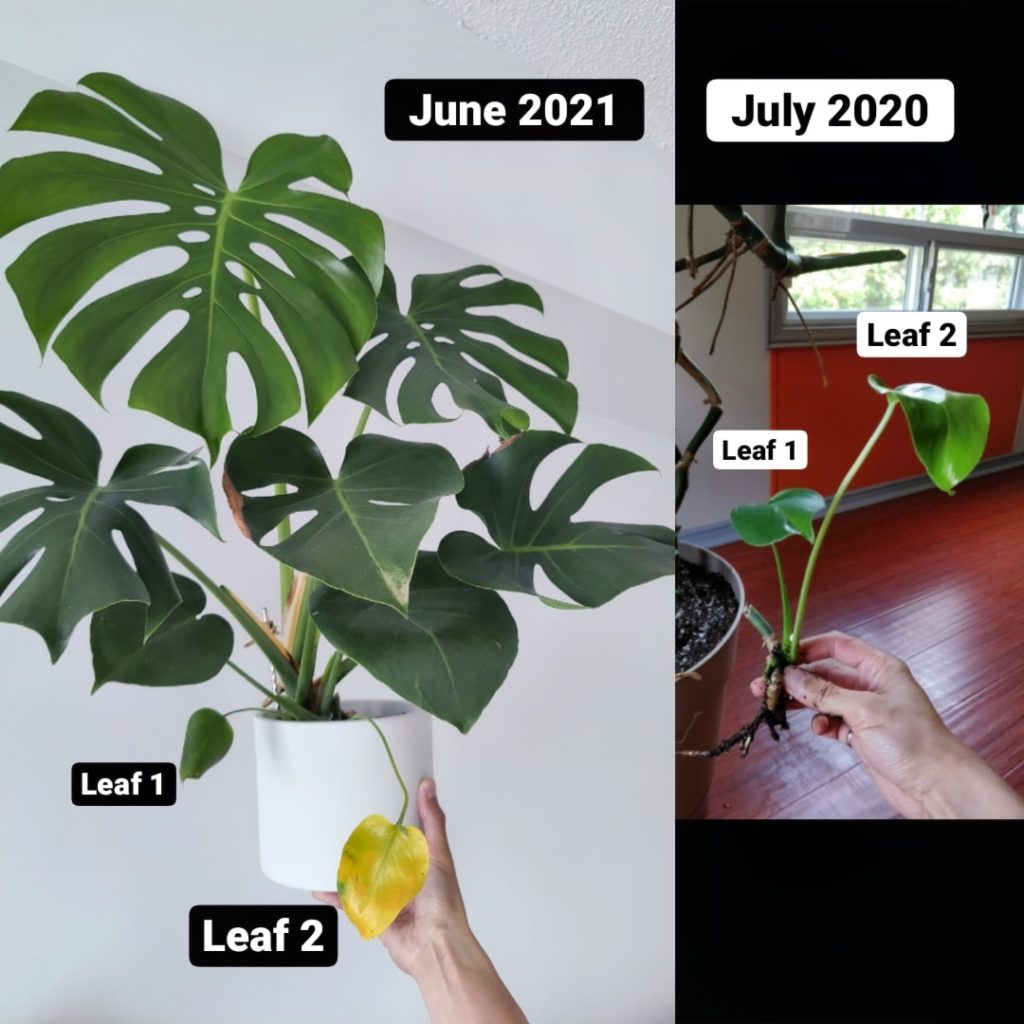
When I removed this pup, it only had Leaf 1 and 2. About a year later, as many new leaves have grown, the time has come for Leaf 2 to retire.
If you want to learn a healthy, balanced approach to houseplant care, check out my online course or my book.
Tired of your houseplants dying on you?
Sign up and I’ll do my best to help them live their best lives!